Setting up Data Lake on GCP using Cloud Storage and BigQuery
Analytics Vidhya
FEBRUARY 25, 2023
The need for a data lake arises from the growing volume, variety, and velocity of data companies need to manage and analyze.
This site uses cookies to improve your experience. To help us insure we adhere to various privacy regulations, please select your country/region of residence. If you do not select a country, we will assume you are from the United States. Select your Cookie Settings or view our Privacy Policy and Terms of Use.
Cookies and similar technologies are used on this website for proper function of the website, for tracking performance analytics and for marketing purposes. We and some of our third-party providers may use cookie data for various purposes. Please review the cookie settings below and choose your preference.
Used for the proper function of the website
Used for monitoring website traffic and interactions
Cookies and similar technologies are used on this website for proper function of the website, for tracking performance analytics and for marketing purposes. We and some of our third-party providers may use cookie data for various purposes. Please review the cookie settings below and choose your preference.

Analytics Vidhya
FEBRUARY 25, 2023
The need for a data lake arises from the growing volume, variety, and velocity of data companies need to manage and analyze.

Snowflake
APRIL 2, 2025
Data storage has been evolving, from databases to data warehouses and expansive data lakes, with each architecture responding to different business and data needs. Traditional databases excelled at structured data and transactional workloads but struggled with performance at scale as data volumes grew.
This site is protected by reCAPTCHA and the Google Privacy Policy and Terms of Service apply.
Agent Tooling: Connecting AI to Your Tools, Systems & Data
How to Modernize Manufacturing Without Losing Control
Mastering Apache Airflow® 3.0: What’s New (and What’s Next) for Data Orchestration

Edureka
APRIL 22, 2025
The alternative, however, provides more multi-cloud flexibility and strong performance on structured data. Its multi-cluster shared data architecture is one of its primary features. Additionally, it offers genuine multi-cloud flexibility by integrating easily with AWS, Azure, and GCP.
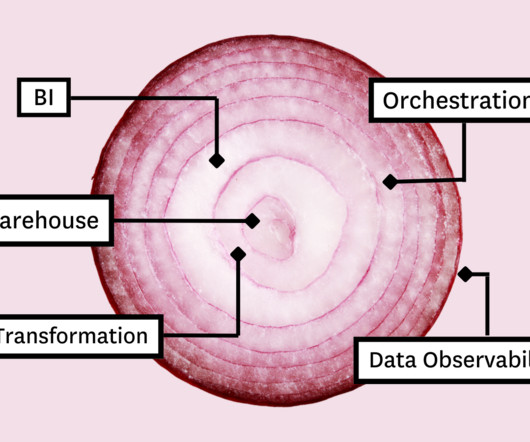
Monte Carlo
JULY 19, 2023
In this article, we’ll present you with the Five Layer Data Stack—a model for platform development consisting of five critical tools that will not only allow you to maximize impact but empower you to grow with the needs of your organization. Before you can model the data for your stakeholders, you need a place to collect and store it.

Cloudera
JUNE 25, 2021
Using easy-to-define policies, Replication Manager solves one of the biggest barriers for the customers in their cloud adoption journey by allowing them to move both tables/structured data and files/unstructured data to the CDP cloud of their choice easily. Understanding Sentry permissions on CDH cluster.

Edureka
APRIL 14, 2025
It also supports various sources, including cloud storage, on-prem databases, and third-party platforms, making it highly versatile for hybrid ecosystems. However, it leans more toward transforming and presenting cleaned data rather than processing raw datasets.
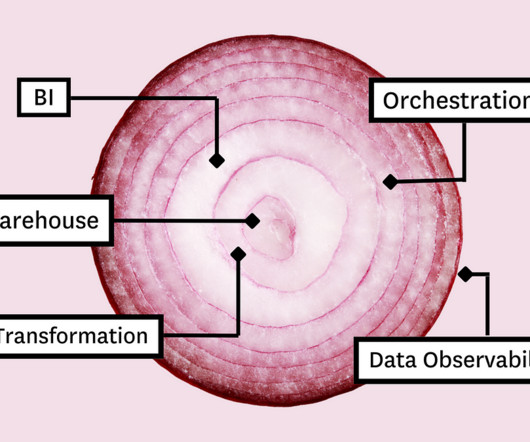
Towards Data Science
JULY 21, 2023
In this article, we’ll present you with the Five Layer Data Stack — a model for platform development consisting of five critical tools that will not only allow you to maximize impact but empower you to grow with the needs of your organization. Before you can model the data for your stakeholders, you need a place to collect and store it.
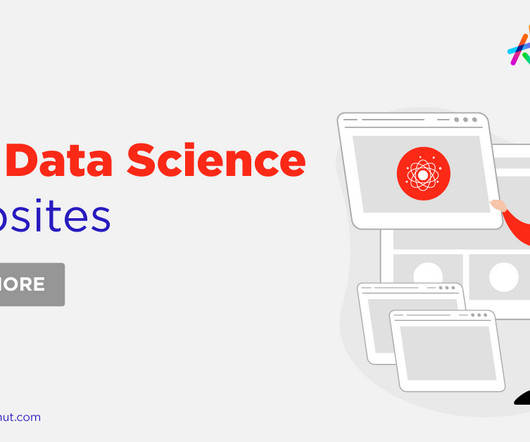
Knowledge Hut
FEBRUARY 29, 2024
A database is a structured data collection that is stored and accessed electronically. File systems can store small datasets, while computer clusters or cloud storage keeps larger datasets. According to a database model, the organization of data is known as database design.
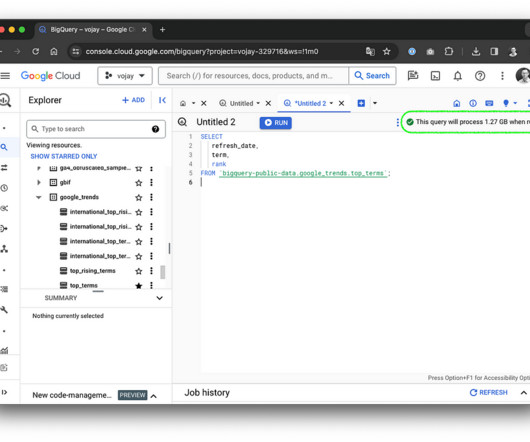
Towards Data Science
MARCH 5, 2024
BigQuery separates storage and compute with Google’s Jupiter network in-between to utilize 1 Petabit/sec of total bisection bandwidth. The storage system is using Capacitor, a proprietary columnar storage format by Google for semi-structured data and the file system underneath is Colossus, the distributed file system by Google.
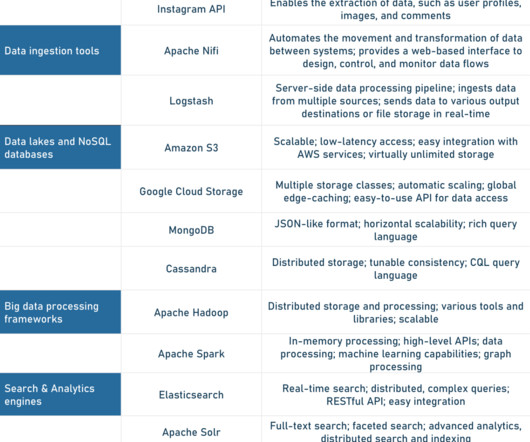
AltexSoft
MAY 12, 2023
What is unstructured data? Definition and examples Unstructured data , in its simplest form, refers to any data that does not have a pre-defined structure or organization. It can come in different forms, such as text documents, emails, images, videos, social media posts, sensor data, etc.

RandomTrees
SEPTEMBER 6, 2020
A combination of structured and semi structured data can be used for analysis and loaded into the cloud database without the need of transforming into a fixed relational scheme first. This stage handles all the aspects of data storage like organization, file size, structure, compression, metadata, statistics.

Snowflake
FEBRUARY 23, 2023
Snowflake’s solution to ingesting very large healthcare pricing transparency data files. In the above solution approach, the pricing transparency JSON file is hosted in a cloud storage bucket and is referenced through an external stage on Snowflake.

U-Next
SEPTEMBER 7, 2022
Structuring data refers to converting unstructured data into tables and defining data types and relationships based on a schema. Data lakes, however, are sometimes used as cheap storage with the expectation that they are used for analytics. Gen 2 Azure Data Lake Storage . Athena on AWS. .

RandomTrees
SEPTEMBER 17, 2024
Level III: Volumes, Tables, Views, Functions & Models Volumes: It is a Logical volume of unstructured, non-tabular data stored in cloud object storage. Tables: It is a collection of data organized by rows and columns and forming the core of structured data storage. GCS buckets on Google Cloud.

DareData
JANUARY 30, 2023
Examples of technologies able to aggregate data in data lake format include Amazon S3 or Azure Data Lake. Data warehouses: These are specialized data storage systems that are designed to store and manage large amounts of structured data for reporting and analysis.
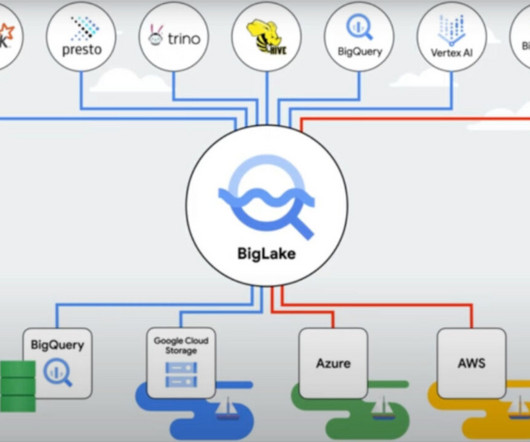
Monte Carlo
APRIL 24, 2023
AWS is one of the most popular data lake vendors. AWS Lake Formation offers an alternative for data teams looking for a more structured data lake or data lakehouse solution. It’s frustrating…[Lake Formation] is a step-level change for how easy it is to set up data lakes,” he said.
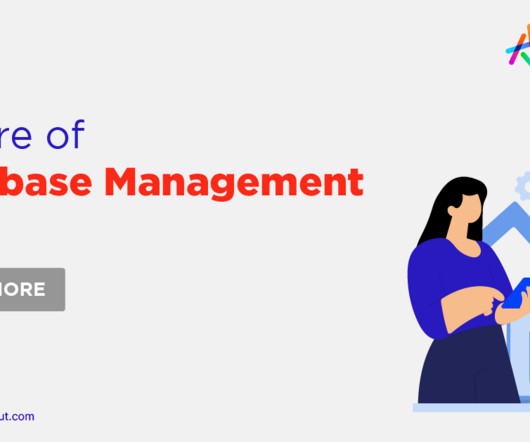
Knowledge Hut
JULY 24, 2023
NoSQL Databases NoSQL databases are non-relational databases (that do not store data in rows or columns) more effective than conventional relational databases (databases that store information in a tabular format) in handling unstructured and semi-structured data. Examples include Amazon DynamoDB and Google Cloud Datastore.
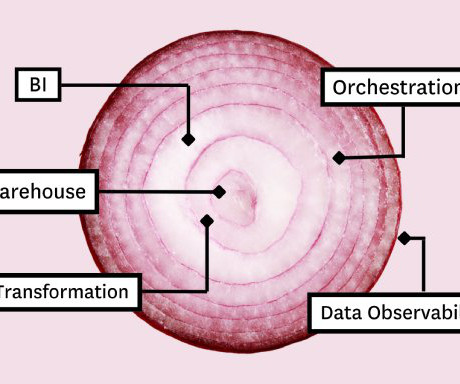
Monte Carlo
JANUARY 27, 2024
Those tools include: Table of Contents Cloud storage and compute Data transformation Business Intelligence (BI) Data observability Data orchestration The most important part? Cloud storage and compute Whether you’re stacking data tools or pancakes, you always build from the bottom up.

Monte Carlo
AUGUST 25, 2023
Understanding data warehouses A data warehouse is a consolidated storage unit and processing hub for your data. Teams using a data warehouse usually leverage SQL queries for analytics use cases. This same structure aids in maintaining data quality and simplifies how users interact with and understand the data.

ProjectPro
JANUARY 24, 2023
BigQuery enables users to store data in tables, allowing them to quickly and easily access their data. It supports structured and unstructured data, allowing users to work with various formats. BigQuery also supports many data sources, including Google Cloud Storage, Google Drive, and Sheets.
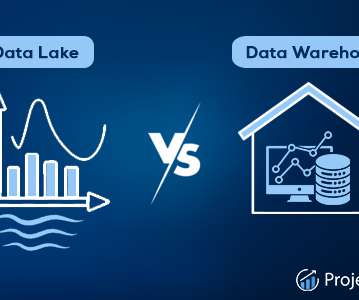
ProjectPro
AUGUST 11, 2021
This means that a data warehouse is a collection of technologies and components that are used to store data for some strategic use. Data is collected and stored in data warehouses from multiple sources to provide insights into business data. Data from data warehouses is queried using SQL.
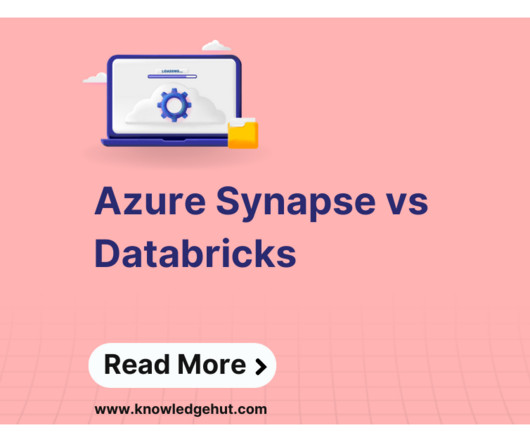
Knowledge Hut
SEPTEMBER 26, 2023
Key connectivity features include: Data Ingestion: Databricks supports data ingestion from a variety of sources, including data lakes, databases, streaming platforms, and cloud storage. This flexibility allows organizations to ingest data from virtually anywhere.

Precisely
OCTOBER 5, 2023
Determine what data you’ll need Once you’ve determined the use case, brainstorm and dig deeper into what your end goals are and what you need to know to get there. For example, will you need structured data, unstructured, or a combination? Are files delivered as CSV, ASCII, a delimited text file, or another way?

Knowledge Hut
APRIL 25, 2023
It provides a flexible data model that can handle different types of data, including unstructured and semi-structured data. Key features: Flexible data modeling High scalability Support for real-time analytics 4. Key features: Instant elasticity Support for semi-structured data Built-in data security 5.
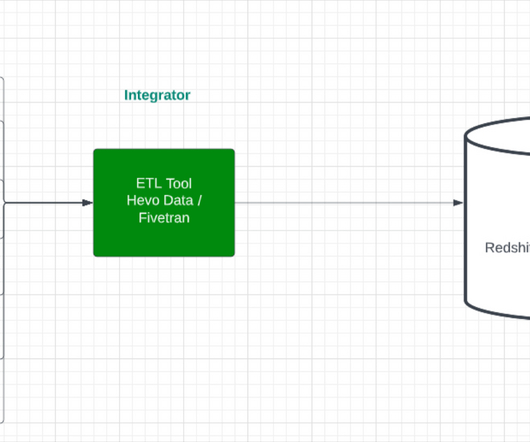
Monte Carlo
FEBRUARY 15, 2023
Key Functions of a Data Warehouse Any data warehouse should be able to load data, transform data, and secure data. Data Loading This is one of the key functions of any data warehouse. Data can be loaded in batches or can be streamed in near real-time.

Edureka
FEBRUARY 9, 2023
Data engineering is a new and evolving field that will withstand the test of time and computing advances. Certified Azure Data Engineers are frequently hired by businesses to convert unstructured data into useful, structured data that data analysts and data scientists can use.

AltexSoft
MARCH 30, 2023
What is Databricks Databricks is an analytics platform with a unified set of tools for data engineering, data management , data science, and machine learning. It combines the best elements of a data warehouse, a centralized repository for structured data, and a data lake used to host large amounts of raw data.

Netflix Tech
DECEMBER 14, 2018
data access semantics that guarantee repeatable data read behavior for client applications. System Requirements Support for Structured Data The growth of NoSQL databases has broadly been accompanied with the trend of data “schemalessness” (e.g., key value stores generally allow storing any data under a key).

Striim
AUGUST 22, 2024
Data integration The data integration layer is the backbone of any analytics architecture, as downstream reporting and analytics systems rely on consistent and accessible data. This layer leverages data integration platforms like Striim to connect to various data sources, ingest streaming data, and deliver it to various targets.

ProjectPro
AUGUST 24, 2021
Then, the Yelp dataset downloaded in JSON format is connected to Cloud SDK, following connections to Cloud storage which is then connected with Cloud Composer. Cloud composer and PubSub outputs are Apache Beam and connected to Google Dataflow. Google BigQuery receives the structured data from workers.

Knowledge Hut
APRIL 25, 2024
It helps in storing the data in the CPU. Data Storage: The place where the information is stated somewhere safe without directly being processed. Storage solutions like solid-state drives and cloud storage databases are included in this drive. It is looked after by the Database Management System (DBMS).

Rockset
SEPTEMBER 15, 2020
With writing and querying of data, there is always an inherent tradeoff between high write rates and the visibility of data in queries, and this is precisely what RockBench measures. Semi-structured data. Most of real-life decision-making data is in semi-structured form, e.g. JSON, XML or CSV.
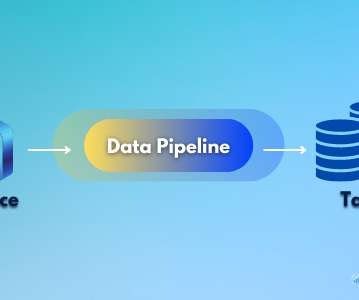
ProjectPro
DECEMBER 7, 2021
In broader terms, two types of data -- structured and unstructured data -- flow through a data pipeline. The structured data comprises data that can be saved and retrieved in a fixed format, like email addresses, locations, or phone numbers. Step 1- Automating the Lakehouse's data intake.

Ascend.io
AUGUST 31, 2023
There are a range of tools dedicated to just the extraction (“E”) function to land data in any type of data warehouse or data lake. Once in place, any transformations on the data are performed directly in the data lake on demand as different analytical tasks come up.

ProjectPro
FEBRUARY 16, 2023
They must load the raw data into a data warehouse for this analysis. There are numerous ways to import data into a data warehouse using SQL. For instance, data engineers can easily transfer the data onto a cloud storage system and load the raw data into their data warehouse using the COPY INTO command.

ProjectPro
JANUARY 19, 2022
Data engineering is a new and ever-evolving field that can withstand the test of time and computing developments. Companies frequently hire certified Azure Data Engineers to convert unstructured data into useful, structured data that data analysts and data scientists can use.

AltexSoft
JULY 29, 2022
It lets you run MapReduce and Spark jobs on data kept in Google Cloud Storage (instead of HDFS); or. Oracle Big Data Service , offering customers a fully-managed Hadoop environment in the cloud. Snowflake: an evolving ecosystem for all types of data. There are other HaaS vendors as well.

ProjectPro
MAY 31, 2021
Data Description: You will use the Covid-19 dataset(COVID-19 Cases.csv) from data.world , for this project, which contains a few of the following attributes: people_positive_cases_count county_name case_type data_source Language Used: Python 3.7 Machines and humans are both sources of structured data.
Expert insights. Personalized for you.
We have resent the email to
Are you sure you want to cancel your subscriptions?


Let's personalize your content